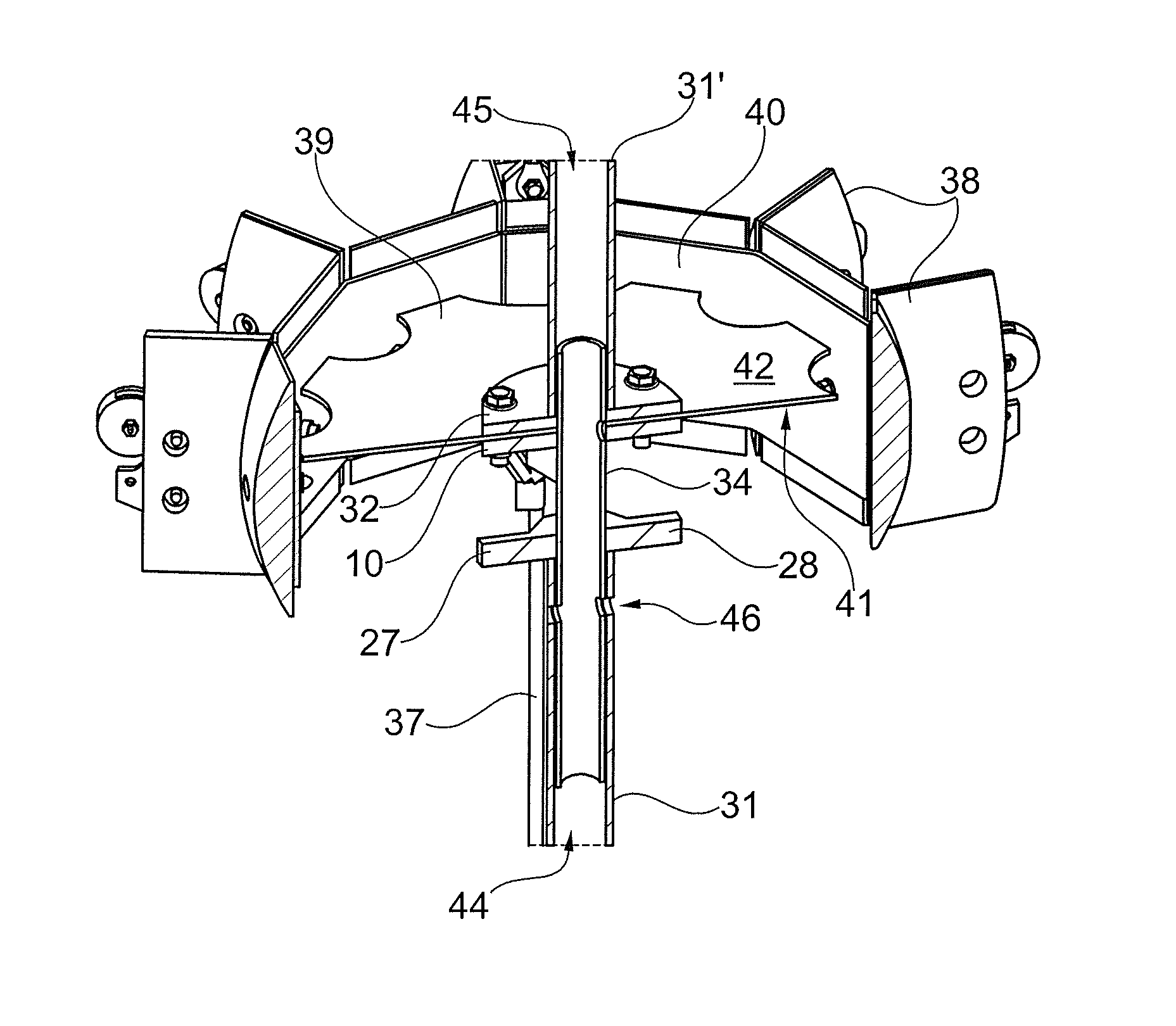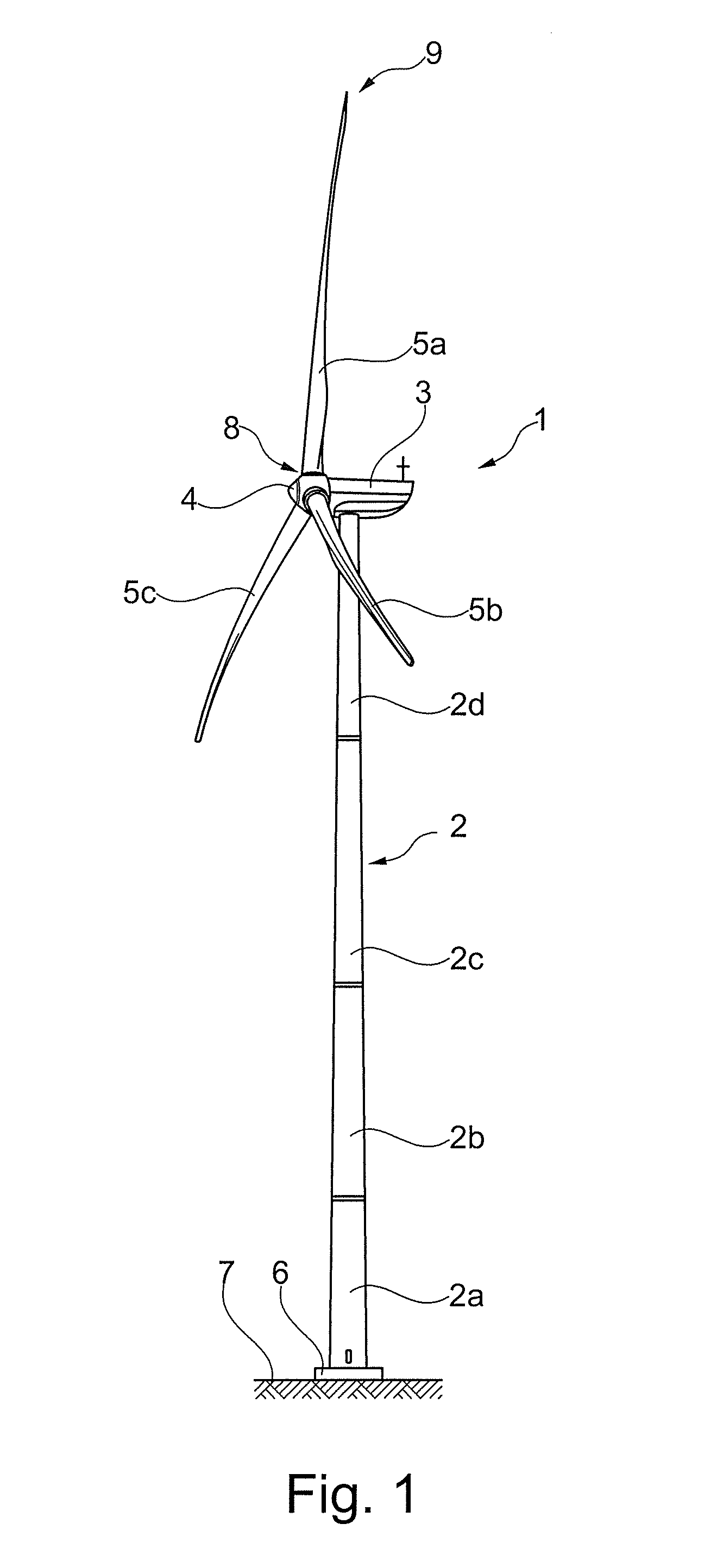Unit for rotating cable spacing plates in a wind turbine tower
a technology for wind turbines and towers, applied in the direction of propellers, water-acting propulsive elements, propellers, etc., can solve the problems of increasing the temperature of cables, increasing the wear on cables, and reducing the lifetime of cables, so as to reduce the stress on cables. , the effect of reducing the stress
- Summary
- Abstract
- Description
- Claims
- Application Information
AI Technical Summary
Benefits of technology
Problems solved by technology
Method used
Image
Examples
Embodiment Construction
[0063]In the following text, the figures will be described one by one and the different parts and positions seen in the figures will be numbered with the same numbers in the different figures. Not all parts and positions indicated in a specific figure will necessarily be discussed together with that figure.
[0064]FIG. 1 shows an exemplary embodiment of a wind turbine 1 comprising a wind turbine tower 2 and a nacelle 3 arranged at top of the wind turbine tower 2. The nacelle 3 may be coupled to one or more yaw bearings (not shown) located at the top of the wind turbine tower 2 so that the nacelle 3 may yaw relative to the wind turbine tower 2. A separate circuit (not shown) configured to determine the yawing or twist of the nacelle 3 relative to its initial position may be coupled to the yaw bearing. The wind turbine tower 2 may comprise one or more tower sections 2a-d mounted on top of each other. A rotor hub 4 may be rotatably mounted to the nacelle 3 via a rotor shaft (not shown). ...
PUM
 Login to View More
Login to View More Abstract
Description
Claims
Application Information
 Login to View More
Login to View More - R&D
- Intellectual Property
- Life Sciences
- Materials
- Tech Scout
- Unparalleled Data Quality
- Higher Quality Content
- 60% Fewer Hallucinations
Browse by: Latest US Patents, China's latest patents, Technical Efficacy Thesaurus, Application Domain, Technology Topic, Popular Technical Reports.
© 2025 PatSnap. All rights reserved.Legal|Privacy policy|Modern Slavery Act Transparency Statement|Sitemap|About US| Contact US: help@patsnap.com



